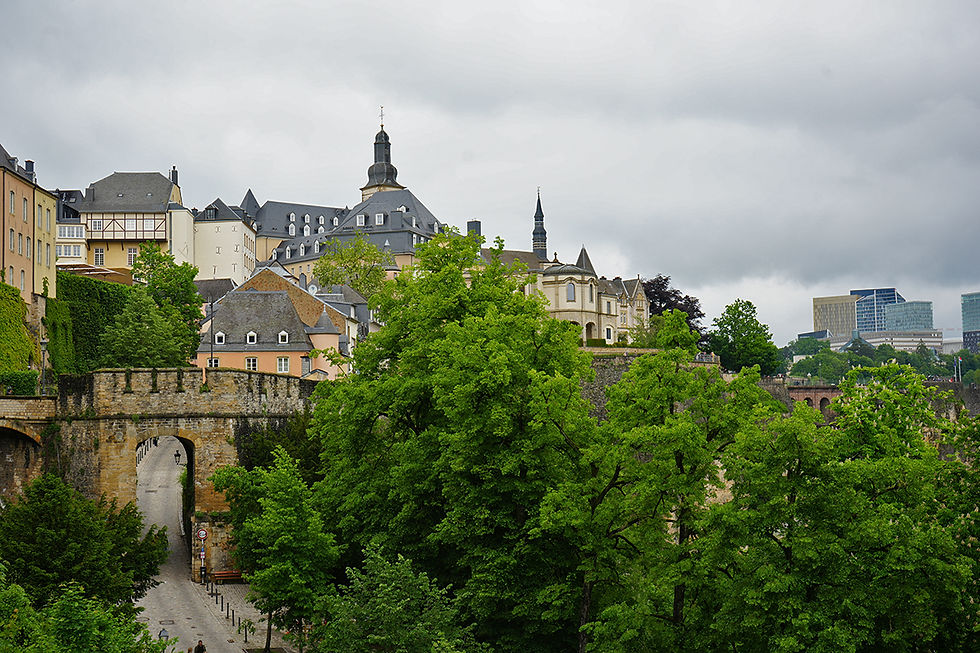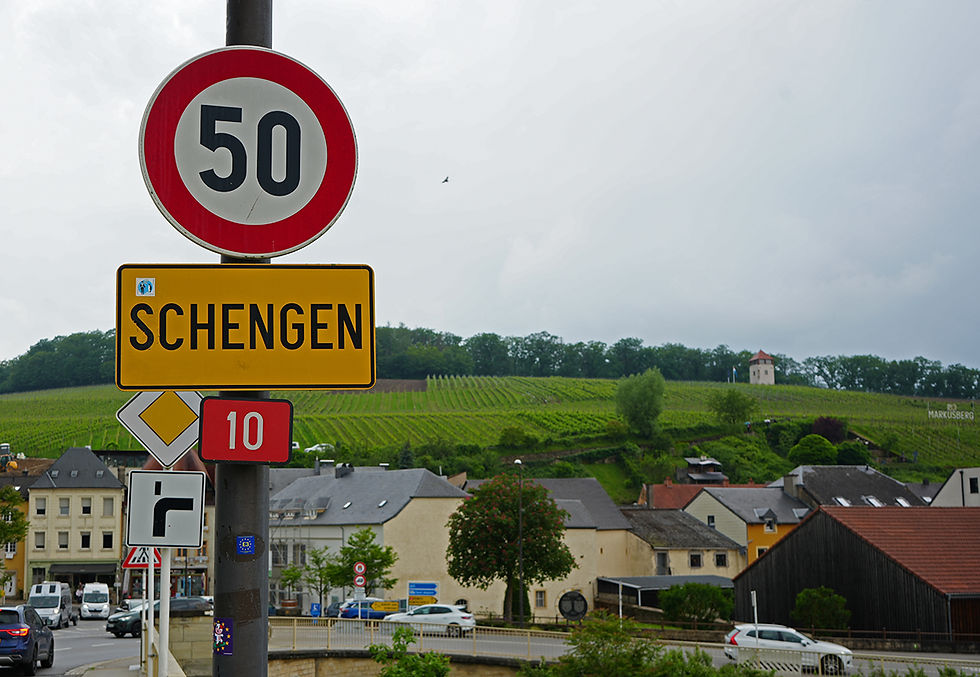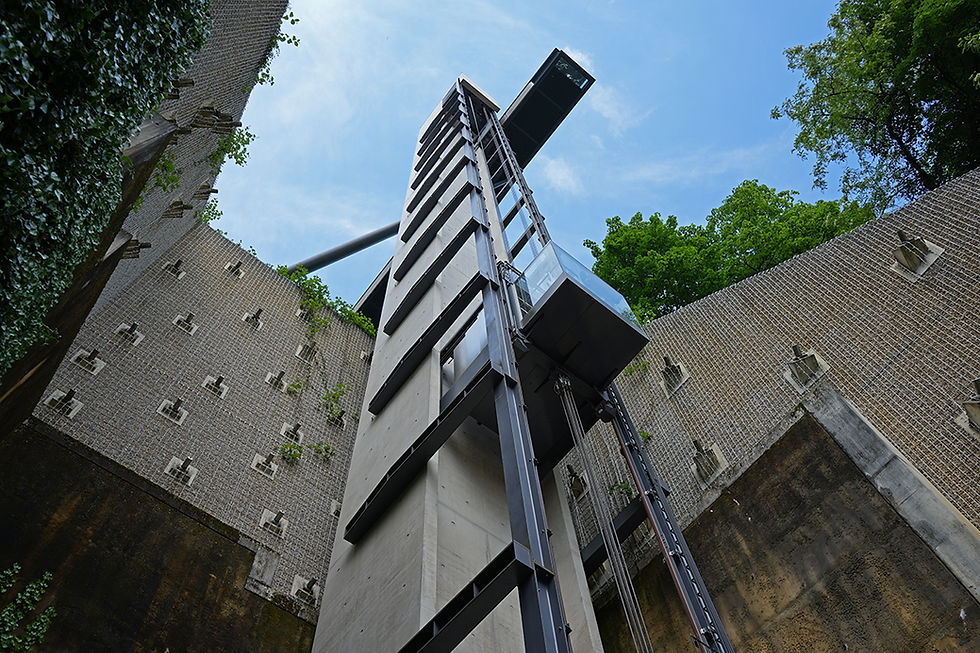Clouds above Schengen
- lavieenroute
- Jun 8, 2024
- 5 min read
What does a small monarchy situated between France, Germany and Belgium and resolutely cultivating its European identity look like? Time for a voyage of discovery: A long weekend is a great way to explore Luxembourg.
When you get to know a new country, the journey from an airport to a city is often revealing. How long are the distances, how much does a ticket cost, how dense is the traffic, how difficult is it to organize mobility?
Luxembourg leaves us speechless, because about 20 minutes after landing we are already in our hotel room. The bus ride into the city center cost us nothing, because the entire public transport system in Luxembourg no longer has tickets and therefore no ticket machines, controls, validations and similar rituals. You just get on the bus or train and star your trip. That's it.
Uncomplicated is the key word in the small capital of the Grand Duchy. We stroll through the weekly market, where farms from the surrounding countries offer their asparagus, potatoes, sausages and flowers as a matter of course, thanks to the open borders - in different languages, of course. You never know for sure whether you will be addressed in French or not, but it doesn't matter, because in a city where foreigners (whatever that strange term means) make up over 70% of the population, you get along somehow.
We take our time, snack on a cinnamon bun and take a seat in an outdoor bar overlooking a large part of the city center, especially the lower part along the Alzette River. The terrain is rough and rocky. The Alzette is in flood. Nevertheless, the atmosphere on this weekend afternoon is cozy, picturesque, almost fairytale-like. History is visible, but the present as one of the centers of the European Union is also almost always visible as a skyline on the edge of the city.
Enchanted, picturesque, yet not old-fashioned.

In the lower part of the old town, we walk along the river and make a long loop back up to the city center. Time for a break before dinner. We find a cozy bistro with a mix of languages. However, we didn't see it coming even in Luxembourg that we would meet a waiter who also has talents as a Donald Duck impersonator.
We start our Sunday morning with an extensive brunch in a pop-up restaurant before setting off to try out the well-oiled public transport system. After about an hour by streetcar and bus, we reach the wine village of Schengen on the Moselle, located directly on the German and very close to the French border.
Schengen would probably only be known to wine connoisseurs if its location had not led to a key agreement of European unification being signed on a Moselle ship. Frequent travelers like us benefit massively from the simplifications brought about by the Schengen Agreement, and so we are also eager to learn more about the history in the Europa Museum right on the river. Is it worth a visit? Basically yes - because contemporary history was written in Schengen. Nevertheless, the museum is no longer in top condition, but we were told that it is due to be renovated - perhaps it will be even more worthwhile visiting after that. In terms of content, the visit is very informative, although the information on Frontex, the organization that “monitors” the Schengen external borders, is perhaps a little sparse and the criticism of this organization is not even addressed.
Perhaps this is a reason to return to the Moselle in the future. Because it goes without saying that we are fascinated by how easy it is to take a short stroll to Germany for a delicious asparagus lunch, only to get back on the bus in Luxembourg with a view of France, where we had entered from Switzerland the day before without passport controls.
On the way back to Luxembourg City, clouds gather over Schengen. We experience a rare thunderstorm in this already flood-stricken region. Our bus driver does a great job, as roads are flooded again and again or a layer of hail makes the road slippery. As a result, the journey takes a little longer than expected - back in the capital, it's time for a coffee stop.
Wine village and subject of contemporary history.

An evening stroll takes us to a lively pub that breathes life into a stone old town house. Presumably nothing human is alien to these walls either, and the DJ mixer and our dinner under a TV playing football is not exactly the wildest thing to have happened here in the last few centuries.
We saved one more stop for the next morning. The exposed location of the city of Luxembourg on and below a cliff means that some walks are more like short hikes. E-bikes are therefore also popular. Or you can simply take a boldly designed elevator that connects the two parts of the city in 90 seconds - free of charge. We ride up to the upper town and head for the Europaviertel. It's not particularly busy here on a Sunday, so we marvel at the architecture before reflecting on the weekend over a crêpe in the old town.
Public transport with a view.

Because we have fallen for Luxembourg's charm a little bit. If we didn't know what to expect at the beginning of the trip, we found a small, colorful country whose people we got to know as relaxed. For a financial center, a political center and the seat of a monarchy, the vibes in Luxembourg are refreshingly down-to-earth. Perhaps diversity is the recipe for this?
Relaxed vibes: Luxembourg's charming capital.




Comments